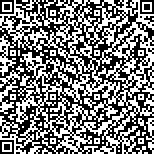陈静,石明芳,陈君,等.小脑间歇性θ短阵脉冲刺激联合物理治疗对脑卒中患者平衡功能和步态的影响[J].中华物理医学与康复杂志,2023,45(5):402-407
扫码阅读全文

|
| 小脑间歇性θ短阵脉冲刺激联合物理治疗对脑卒中患者平衡功能和步态的影响 |
|
| |
| DOI:10.3760/cma.j.issn.0254-1424.2023.05.004 |
| 中文关键词: 间歇性θ短阵脉冲刺激 小脑 脑卒中 平衡 步态 |
| 英文关键词: Theta burst stimulation Cerebellum Stroke Balance Gait |
| 基金项目:上海市临床重点专科项目(shslczdzk02703);上海市中西医结合康复医学研究所课题(YJS-099-2) |
|
| 摘要点击次数: 4409 |
| 全文下载次数: 4901 |
| 中文摘要: |
| 目的 观察小脑间歇性θ短阵脉冲刺激(iTBS)联合物理治疗对脑卒中患者平衡功能和步态的影响。 方法 选取脑卒中后偏瘫患者32例,按随机数字表法分为治疗组和对照组各16例。2组患者均接受常规物理治疗,物理治疗前治疗组行健侧小脑iTBS治疗,对照组给予相同部位伪刺激,iTBS每日治疗1次,每次治疗200 s,每周6次,连续治疗3周。于治疗前、治疗3周后和出院3周后(随访时)对2组患者进行疗效评估。主要观察指标包括Berg平衡量表(BBS)评分、动摇总轨迹长和X轴最大动摇径,用于评估2组患者的平衡功能和重心转移能力。次要评估指标有采用10 m步行时间测试(10MWT)和Tinetti步态评估量表(POMA-G)评估2组患者的步行能力;采用简化的Fugl-Meyer下肢运动功能量表(FMA-LE)评估2组患者下肢的运动功能;采用Barthel指数(BI)评估2组患者的日常生活活动能力。 结果 治疗3周后和随访时,对照组患者的BBS评分分别为(41.38±5.33)分和(42.19±5.55)分,较组内治疗前均显著改善(P<0.05);治疗组患者治疗3周后和随访时的BBS评分、动摇总轨迹长和X轴最大动摇径较组内治疗前和对照组同时间点均显著改善,差异均有统计学意义(P<0.05)。治疗3周后和随访时,对照组患者的POMA-G评分、FMA-LE评分和BI评分较组内治疗前均显著改善(P<0.05)。治疗3周后和随访时,治疗组患者的10MWT、POMA-G评分、FMA-LE评分和BI评分较组内治疗前均显著改善(P<0.05),且其治疗3周后的POMA-G评分、10MWT和随访时的10MWT和BI评分均显著优于对照组同时间点,差异均有统计学意义(P<0.05)。 结论 小脑间歇性θ短阵脉冲刺激联合物理治疗可有效地改善脑卒中后患者的平衡功能和步态,分析其可能的机制与小脑间歇性θ短阵脉冲刺激可调节小脑-丘脑-大脑皮质环路有关。 |
| 英文摘要: |
| Objective To explore any effect of combining intermittent theta-burst stimulation (iTBS) of the cerebellum with physiotherapy on the balance function and gait of stroke survivors. Methods Thirty-two hemiplegic stroke survivors were divided at random into a treatment group and a control group, each of 16. Both groups received conventional physical therapy. Before their physiotherapy sessions the treatment group received iTBS treatment of the cerebellar hemisphere contralateral to the affected cerebral hemisphere, while the control group was given pseudo-stimulation on the same site. The iTBS was given once a day for 200s each time, 6 times a week for 3 weeks consecutively. Before and after the treatment, as well as 3 weeks later, both groups′ balance was evaluated using the Berg Balance Scale (BBS). Their ability to shift their center of gravity, total length of their shaking trajectory, and maximum shaking diameter were also quantified. Walking ability was assessed using 10m walk test (10MWT) times and the Tinetti Gait Assessment Scale (POMA-G). Lower limb motor function was quantified using the relevant Fugl-Meyer assessment (FMA-LE) and the subjects′ ability in the activities of daily living was measured with the Barthel index (BI). Results After the 3 weeks of treatment and at the follow-up the average BBS score of the treatment group had improved significantly more than the control group′s average, as had its total track length and maximum shake diameter. The average POMA-G, FMA-LE and BI scores of the treatment group were also significantly better. Conclusions Combining iTBS with physiotherapy can improve the balance and gait of stroke survivors more effectively than physiotherapy alone. |
|
查看全文
查看/发表评论 下载PDF阅读器 |
| 关闭 |